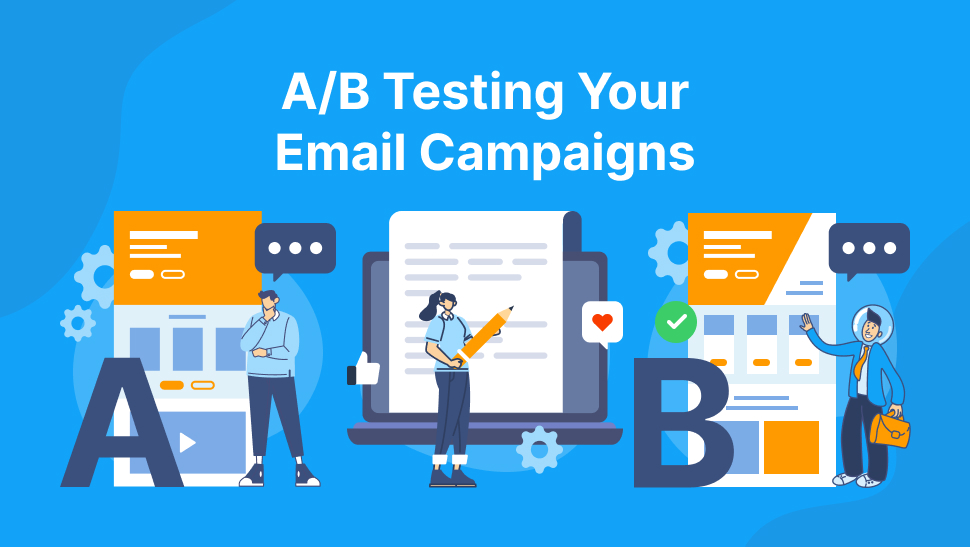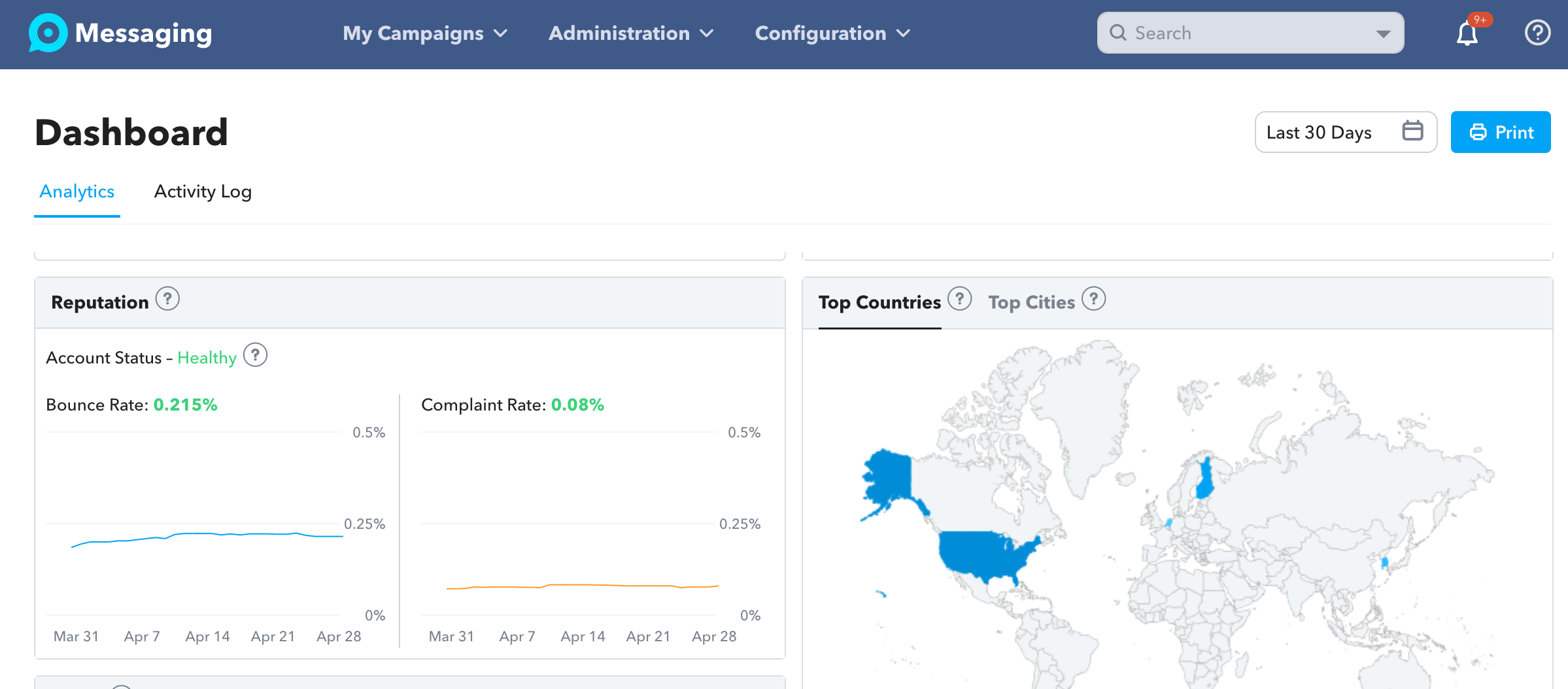In the fast-paced world of digital marketing, email remains a powerful tool for driving conversions and boosting your bottom line. But simply sending out emails isn't enough. To truly maximize your return on investment (ROI), you need to optimize your campaigns for maximum engagement and action. Enter A/B testing, the scientific method for unlocking the secrets to email marketing success.
This comprehensive guide dives deep into the world of A/B testing for email campaigns. You'll learn the fundamentals of A/B testing, what to test, how to set up you’re a/B testing, how to analyze the results, and even more about advanced A/B testing and mistakes to avoid when conducting testing. By the end, you'll be equipped with the knowledge and tools to transform your email marketing into a profit-generating machine through the power of A/B testing.
Table of Contents
- The Fundamentals of A/B Testing
- Step-by-Step Guide on How to Conduct A/B Testing
- Setting Up Your A/B Tests
- Analyzing the Results
- Advanced A/B Testing Techniques
- Common A/B Testing Mistakes
- Conclusion

The Fundamentals of A/B Testing
A/B testing, also known as split testing, is a scientific approach to comparing two versions of an element to see which one performs better. When applied to email marketing, it allows you to test different variations of your email campaigns against each other to determine which version resonates most with your audience and drives them to take action.
Here's why A/B testing is crucial for email marketing success:
Data-Driven Decisions
A/B testing eliminates guesswork. By collecting data on user behavior, you can make informed decisions about what works best for your audience.
Increased Engagement
Testing different subject lines, CTAs, and email content allows you to optimize for improved open rates, click-through rates (CTRs), and conversions.
Boosted ROI
By optimizing your emails to drive higher engagement and conversions, you ultimately maximize the return on your email marketing investment.
Step-by-Step Guide on How to Conduct A/B Testing
A/B testing is an ongoing process. If you continue to improve with A/B testing, the steps you take will look like this:
Develop a Hypothesis
Formulate a hypothesis about which element of your email campaign might impact performance.
Design Variations
Create two or more versions of the element you're testing, ensuring one variable is modified at a time.
Run the Test
Send your A/B tested email campaign to a segment of your email list.
Analyze Results
Once sufficient data is collected, analyze the results to determine which version performed better.
Implement the Winner
Integrate the winning variation into your future email campaigns.
Repeat the Process
Continuously identify new elements to test and refine your email strategy for ongoing
improvement.
A Treasure Trove of A/B Testing Opportunities
TruVISIBILITY's Messaging app makes it easy for users to A/B test. You can simply create your email blasts, change the sections you wish to test, and segment your email lists. Messaging allows every user to view the analytics of their email marketing results from open rate to geographical location.
What to Test
The beauty of A/B testing lies in its versatility. You can test virtually any element of your email campaigns to optimize for maximum impact. Here are some prime examples:
Subject Lines
Test different subject lines to see which ones entice recipients to open your email. Focus on clarity, urgency, and benefit-oriented messaging.
Sender Name
Experiment with different sender names, such as your company name, a specific department, or even an individual's name.
Preheader Text
This short snippet appears next to the subject line on many mobile devices. Test different preheader text to pique curiosity and encourage opens.
Email Design
Test different email layouts, color schemes, image placements, and font styles to determine the most visually appealing and user-friendly design for your audience.
Email Body Content
Experiment with different writing styles, content lengths, and call-to-action (CTA) placements.
Personalization
Test the effectiveness of personalized elements such as addressing recipients by name, segmenting your email list based on demographics, or dynamically inserting relevant content based on user behavior.
Send Time
Test different days and times of the week to see when your audience is most receptive to your emails.
Setting Up Your A/B Tests
While A/B testing is a powerful tool, it's crucial to implement it correctly to ensure statistically significant results. Here's a step-by-step guide to setting up effective A/B tests for your email campaigns.
Define Your Goals
Before diving in, determine the specific goals you aim to achieve with your A/B test. Do you want to increase open rates, click-through rates, or conversions? Having clear goals helps you choose the right metrics to track and analyze.
Formulate a Hypothesis
Based on your goals and what you know about your audience, develop a hypothesis about which element of your email campaign might have the biggest impact. For example, your hypothesis could be: "Using a personalized subject line will lead to a higher open rate compared to a generic subject line."
Choose Your Testing Platform
Most email marketing platforms offer built-in A/B testing functionalities. These tools allow you to easily create variations, segment your email list, and track results.

Segment Your Email List
Don't send your A/B test to your entire list at once. Instead, segment your list into smaller groups and randomly assign them to receive either version A or version B of your email. This ensures a fair comparison and statistically relevant results.
Maintain Consistent Variables
While testing one element, ensure all other aspects of your email remain consistent. This allows you to isolate the impact of the specific element you're testing.
Set Sample Size
The size of your test groups significantly impacts the validity of your results. Use a sample size calculator provided by your email marketing platform or consult a statistician to determine the optimal number of recipients for each variation.
Determine Test Duration
Run your A/B test for a sufficient period to collect enough data for statistically sound analysis. This timeframe will depend on your email volume and typical engagement rates.
Track the Right Metrics
Depending on your goals, track relevant metrics such as open rates, click-through rates, conversion rates, unsubscribe rates, and bounce rates. Most email marketing platforms provide detailed analytics reporting.
Analyzing the Results
Once your A/B test has concluded, it's time to analyze the data and determine the winning variation. Here's what to consider:
Statistical Significance
Don't rely solely on small percentage increases. Use statistical significance tests to ensure the observed difference between variations is not due to random chance.
Confidence Interval
Look at the confidence interval associated with your results. A narrower confidence interval indicates a more reliable result.
Overall Impact
Consider the overall impact on your key goals. Even a small increase in open rate could translate to a significant boost in conversions if your email list is large.
By analyzing these factors, you can identify the winning variation that performed best in achieving your desired outcome.
Advanced A/B Testing Techniques
Once you've mastered the fundamentals, consider these advanced A/B testing techniques to further refine your email marketing strategy:
Multivariate Testing
Test multiple elements simultaneously to understand how different combinations of variables interact and influence performance.
Heatmaps & Click Tracking
Use these tools to see where recipients click within your email and identify areas for improvement in terms of user engagement with your content and CTAs.
A/B Testing Landing Pages
If your emails link to landing pages, test different variations of the landing page design, copy, and CTAs to optimize conversions further.
Testing Across Devices
Analyze how your emails perform on different devices (desktop, mobile, tablet) and consider A/B testing specific elements for mobile optimization.
By continuously exploring and implementing advanced A/B testing techniques, you can gain deeper insights into your audience's preferences and refine your email marketing strategy for maximum effectiveness.
Common A/B Testing Mistakes
While A/B testing offers immense benefits, it's easy to fall into some common pitfalls. Here's what to avoid:
Testing Too Many Variables
Focus on testing one element at a time to isolate its impact. Testing multiple variables simultaneously makes it difficult to pinpoint what's driving the results.
Insufficient Sample Size
Ensure your test groups are large enough to generate statistically significant results. Small sample sizes can lead to misleading data.
Not Testing Long Enough
Don't prematurely end your A/B test. Give it enough time to gather sufficient data, especially if your email send frequency is low.
Ignoring the Results
The true value of A/B testing lies in taking action based on the insights you gain. Implement the winning variations and continuously iterate your email marketing strategy for ongoing improvement.
Not Documenting Your Tests
Keep a record of your A/B tests, including the hypothesis, variations tested, results, and insights gained. This documentation serves as a valuable resource for future reference and strategic decision-making.
By staying aware of these common pitfalls, you can ensure your A/B testing efforts deliver valuable insights and contribute to the ongoing success of your email marketing campaigns.
Conclusion
By incorporating A/B testing into your email marketing strategy, you can unlock a world of data-driven insights. You'll gain a deeper understanding of what resonates with your audience and continuously refine your campaigns to drive higher engagement, conversions, and ultimately, profits.
Remember, A/B testing is an ongoing process. The more you test, the more you learn and the better you can tailor your email marketing efforts to achieve your business goals.
Ready to unlock the full potential of A/B testing for your email marketing? TruVISIBILITY can help! We offer comprehensive email marketing services, from crafting compelling content to setting up and analyzing A/B tests. Contact us today for a free consultation and let's discuss how we can help you transform your email marketing into a profit-generating machine.
Key Takeaways
1. Knowing what parts of your email to test, such as subject line and personalization, is vital to A/B testing.
2. Setting up your A/B testing plan includes defining your email marketing goals, choosing your platform, determining the test duration, and more.
3. Avoid common A/B testing mistakes to achieve the most reliable results.
Small businesses, streamline your marketing with the TruVISIBILITY All-In-One Marketing Suite. Try it for free today and see the difference a unified platform makes!
Want to receive more articles?
Sign-up for our weekly newsletter to receive info that will help your business grow



